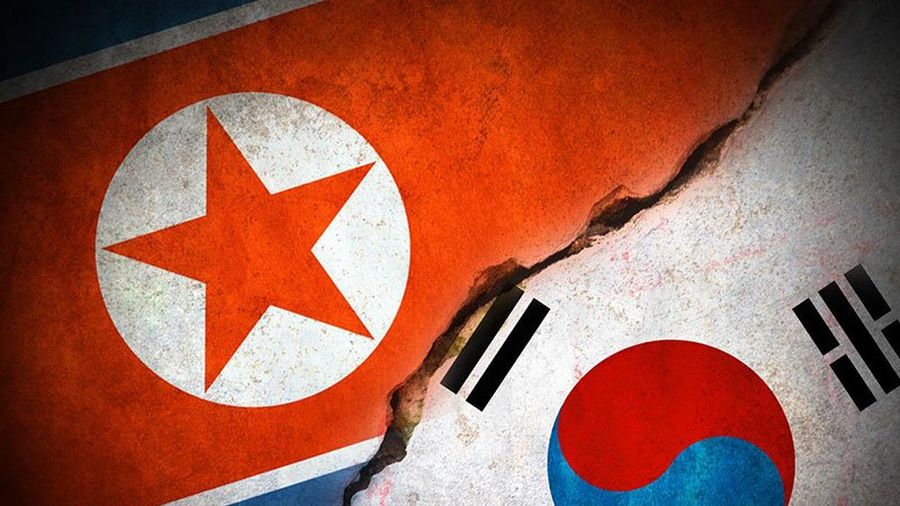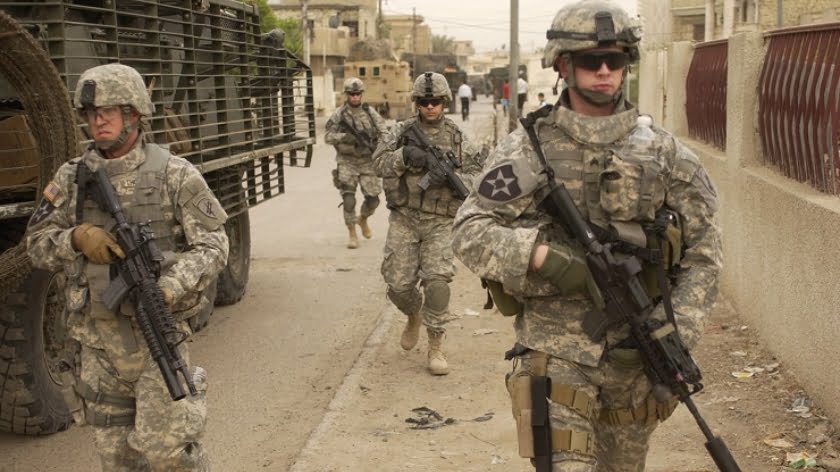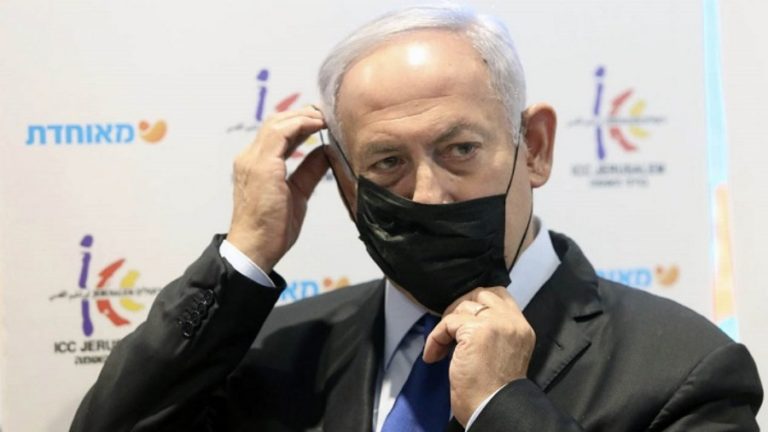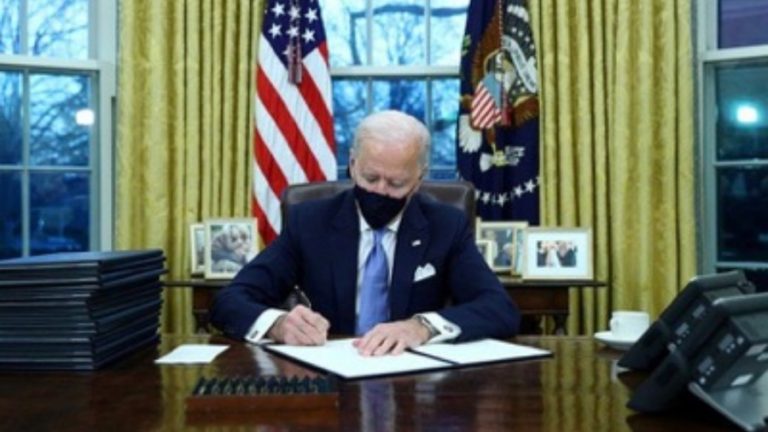A Chronicle of the Escalation Between North and South Korea in Late April and May 2023
In this latest in his series of digests on the increasingly tense situation on the Korean peninsula the author presents an overview of the situation up to mid-June 2023.
On April 15, in response to Pyongyang’s test of its new solid-fuel ICBM, the Hwaseong-18, the US and South Korea conducted joint air force exercises involving B-52H strategic bombers supported by South Korean F-35A and F-15K and US F-16 fighter jets.
On April 16 a North Korean patrol boat crossed the Northern Limit Line in the Yellow Sea, to the northeast of Baengnyeong Island, one of the five Northwest Islands, passing 2 km into South Korean territorial waters, where it remained for some 10 minutes. In response, a South Korean speedboat fired 10 warning shots from its 40mm guns, and the North Korean vessel changed course and crossed back into its own territorial waters.
The South Korean military considers that there is little likelihood of a deliberate invasion. It is believed that the North Korean vessel was actually chasing a Chinese fishing ship which was in the area. Visibility at the time was limited, not exceeding 100 meters, and as a result the South Korean vessel soon collided with the Chinese vessel, and three South Korean sailors were injured as a result of the collision.
From April 17 to 29, the South Korean and US air forces conducted joint exercises, the Korea Flying Training drills, involving some 1,400 servicemen and 110 aircraft. The South Korean army deployed some 60 aircraft, including F-35A, KF-16 and FA-50 fighter jets, as well as a KC-330 refueling aircraft. The US deployed more than 40 aircraft, including F-16 fighters, A-10 attack aircraft, KC-135 refueling aircraft, and F-35B and FA-18 Marine Corps fighter jets. The exercises included formation flights, air defense drills, an emergency “close the skies” operation and the provision of air support to ground forces.
On April 17, as part of their efforts to deter the North Korean missile threat, South Korea, the US and Japan held a joint missile defense exercise in international waters in the Sea of Japan. According to the South Korean Navy Command, three destroyers equipped with the Aegis early detection system, South Korea’s ROKS Yulgok Yi I, the USS Benfold and Japan’s JS Atago took part in the exercise. The main focus of the exercise was on the detection and tracking of a computer-modeled ballistic missile, and on the exchange of operational information.
On April 17, in response to a request by South Korea, the US and Japan, the UN Security Council discussed in an open session Pyongyang’s launch of its new Hwaseong-18 intercontinental ballistic missile, but no document was adopted as a result of the meeting. Linda Thomas-Greenfield, the USA’s Permanent Representative to the UN, condemned Pyongyang’s repeated violations of UN Security Council resolutions, and emphasized that its missile activity is a threat to peace and security in Northeast Asia. And Hwang Joon-kook, South Korea’s Permanent Representative to the UN emphasized that North Korea was the only country that had violated the Treaty on the Non-Proliferation of Nuclear Weapons (the NPT) by openly developing such weapons, along with their delivery systems.
The majority of members of the Security Council have expressed concerns about Pyongyang’s actions. But China’s Permanent Representative to the UN, Zhang Jun, has blamed the tensions on the Korean peninsula on USA’s and its allies’ holding of military exercises involving strategic weapons. Russia’s Permanent Representative to the United Nations, Vasily Nebenzya, spoke out against additional sanctions against North Korea
As readers may be aware, Article X of the NPT allows a non-nuclear state to withdraw from the Treaty if it is threatened by a likely enemy’s nuclear weapons, and North Korea, which is threatened by the USA’s nuclear weapons, has not technically committed any violations. What is more, South Korean hawks rely on the same article to justify their own country’s nuclear program.
Also on April 17, North Korea stated that its development of strategic weapons was aimed at strengthening its self-defense in the face of threats by Washington. Ri Pyong-chol, vice chairman of the Central Military Commission of the Workers’ Party of Korea, who has been in charge of North Korea’s nuclear and rocket programs since the early days of Kim Jong-un’s rule, has emphasized that North Korea’s development of advanced strategic weapons is a “legitimate self-defense measure” aimed at protecting Pyongyang from military threats from the US, and criticized the US using the UN Security Council in order to present North Korea’s exercise of its right to self-defense as a provocation and threat, calling this a “blatant act of interference” in North Korea’s internal affairs.
On April 18 the US military announced that earlier that month it had conducted Exercise Combined Attack, part of the Korean Marine Exercise Program (KMEP).
Also on April 18, the North Korean leader Kim Jong-un visited the National Aerospace Development Administration, where he reviewed the preparations for the launch of the country’s first military reconnaissance satellite. According to the Korean Central News Agency (KCNA) on his orders a special commission has been established to strengthen North Korea’s space reconnaissance capabilities. Kim Jong-un emphasized that the ability to carry out continuous monitoring of an enemy’s military plans and movements from space was essential in order to strengthen the nation’s defense capabilities. He added that Washington and Seoul continue to threaten North Korea’s security by deploying a range of military equipment on the Korean peninsula and in neighboring regions, including nuclear-powered aircraft carriers and strategic nuclear bombers.
On April 21 Pyongyang commented on a joint declaration by the foreign ministers of the G7 countries, in which they stated that North Korea was not recognized as a nuclear power. In a statement published by the KCNA, Choe Son-hui, North Korea’s Minister of Foreign Affairs emphasized that “the reason for our possession of nuclear weapons is that we are forced to acquire them in order to provide us with a reliable defense against the threat posed by the United States, and not in order to gain recognition from anyone.” An therefore “we will never seek any recognition or approval from anyone while we have the capacity to counter the nuclear treat from the USA.”
On April 28, Pentagon Press Secretary Patrick Ryder announced that in accordance with the Washington Declaration, emphasizing the need to strengthen and expand deterrence against North Korea, the Pentagon is to send an Ohio-class nuclear submarine to the waters off the Korean peninsula. It has also been announced that at the end of April the USS John Finn, a new Arleigh Burke-class guided-missile destroyer, docked in the South Korean naval base at Pyeongtaek, Gyeonggi Province. The USS John Finn is equipped with the Aegis anti-missile system.
The USS John Finn participated in joint exercises in the Yellow Sea together with two South Korean guided-missile destroyers ROKS Sejong the Great and ROKS Eulji Mundeok.
On April 29, during a summit between South Korean president Yoon Seok-yeol and US President Joe Biden in Washington, the US Department of Defense announced that highly specialized nuclear disablement teams from the United States and South Korea had conducted joint exercises from March 20-24. That was the first time that the US had ever disclosed information about joint nuclear disablement drills conducted with its allies. South Korea declined to comment on the announcement.
On May 5 the US Air Force held a training exercise code-named Elephant Walk at the Osan Air Force Base (Gyeonggi Province), involving several dozen aircraft with a full payload including F-16 fighters, A-10 Thunderbolt II attack aircrafts, U-2S (Dragon Lady) reconnaissance aircraft and C-12 Huron transport aircraft.
It has also been reported that a US RC-135S Cobra Ball intelligence collector aircraft conducted flights over the Yellow Sea on two consecutive days – May 27 and 28.
On May 12 the US Air Force launched its regular Soaring Eagle exercise, which has been conducted twice a year since 2008, and which was aimed at improving fighting skills in order to maintain its combat readiness. On this occasion F-35A, F-15K and KF-16 fighter jets, KA-1 light attack jets and KC-330 multi-role refueling aircraft participated in the exercise. The exercises involved a range of scenarios, including countering low- and high-speed enemy aircraft entering South Korean airspace, opposing enemy special forces, intercepting missiles, conducting strikes against hostile forces (including against mobile missile launchers and fixed artillery), and emergency interceptions of airborne targets. There was a special focus on testing the integrated tactical interaction of 4th and 5th generation aircraft and on improving the Air Force’s long-range operational capabilities by conducting daytime and night-time aerial refueling exercises.
On May 19 the KCNA published an editorial entitled “US-led Hostile Forces’ Ceaseless War Provocations under Fire,” in which it claimed that the situation on the Korean peninsula is closing in on the brink of explosion, and security commentator Choe Ju-hyon published an article with the title “Expansion of US-led War Drills for Aggression Is Trigger for Driving Situation on Korean Peninsula to Point of Explosion.” In that article he commented that while all countries conduct military exercises for self-defense purposes, only the United States and its satellites, allied against the Republic, conduct exercises targeted at a specific state, involving huge amounts of military hardware and lasting for an entire year.
On May 25, to mark NATO’s 70th anniversary and the 75th anniversary of the founding of South Korea’s Armed Forces, the US and South Korean armed forces launched their largest-ever live-fire exercise at the Seungjin range in Pocheon, Gyeonggi Province, just 25 kilometers south of the border with North Korea. The exercises continued until June 15. Some 2,500 US and South Korean troops from 71 units participated in the exercises, using approximately 600 pieces of military equipment. For comparison, the 2017 exercises, which was previously considered the largest ever held in South Korea, involved 2,000 troops and 250 vehicles.
The advanced aircraft and hardware used in the exercises included 35A stealth fighters, E-737 Peace Eye early warning and control aircraft, Apache AH-64 and AH-1S Cobra attack helicopters, unmanned surveillance aircraft and loitering munitions aircraft, K-2 tanks, K-21 armored vehicles, K9A1 and K55A1 self-propelled howitzers, M270A1 and Chunmoo multiple rocket launch systems, F-16 fighters and A-10 attack aircraft. During the exercises the TAURUS air-to-ground missile, with a range of 500 km and capable of penetrating six-meter-thick concrete walls was also tested.
The exercises involved a scenario based on a full-scale attack by North Korean forces, and the goal was to repel the attack, use drones to perform additional reconnaissance, then launch new strikes using high-precision munitions. In the opening ceremony a large number of small drones rose into the air, spelling out the Korean words meaning “peace through strength” in the sky.
“I was able to see the confidence and overwhelming strength of the South Korean and US soldiers through their eyes during the preparation [for the exercises]… I also could see the strong bonds of the South Korea-US alliance,” said South Korea’s 5th Corps Commander Lt. Gen. Kim Sung-min. The exercises were described by South Korean media as “the largest artillery drills in history.”
The exercises did not escape the notice of North Korea: before they began the KCNA claimed that the upcoming exercises being held by South Korea and the USA “to practice the destruction of a supposed enemy” were pointless, as North Korea is a nuclear power, and such exercises would merely serve to increase tensions on the Korean peninsula.
On May 29 the KNCA declared that the exercises were “a very dangerous saber-rattling” and that they were “not a simple ordinary military drill but a very dishonest and threatening actual drill, a preview for the aggressive war and a dangerous attempt to use armed forces against the DPRK” as the “joint drills by the US and its South Korean puppets will not reach the point of a comprehensive armed attack against us.”
From May 30 – June 2, the Marine Corps Defense Command for the Northwest Islands conducted a comprehensive exercise near Baengnyeong and Yeonpyeong Islands in the Yellow Sea. AH-1S Cobra and AH-64E Apache attack helicopters, a Navy landing craft and F-15K and KF-16 fighter jets were used in the exercise. The army carried out maneuvers at different times of the day and in conditions as close as possible to those in real combat operations. They rehearsed a scenario in which they responded to an invasion by enemy forces, including by using drones. It was the first time in six years that exercises of this type had been conducted. Up until 2017, they had been held twice a year.
Also on May 30 multi-national maritime exercises, code-named Eastern Endeavor 23, were launched not far from Jeju Island. 7 submarines, 6 aircraft and 6 groups of special forces are participating in the exercises. The goal of the maneuvers is to develop, approve and put into practice measures to counter the illegal proliferation of weapons of mass destruction. It is likely that they will also include the rehearsal of measures to prevent illegal transfers of cargo between ships at sea, which are clearly directed against North Korea – it is believed that North Korea adopts this practice to import oil and petroleum products in circumvention of international sanctions.
On May 31, North Korea launched the Cheollima-1 booster rocket carrying the Malligyong-1 military reconnaissance satellite, but due to an engine problem the rocket fell into the Yellow Sea. NEO published a special article dedicated to that event, and here the author need only remind readers of the statement made by Ri Pyong-chol, vice chairman of the Central Military Commission of the Workers’ Party of Korea before the launch, in which he criticized Seoul and Washington for ramping up military tensions on the Korean Peninsula and voiced his opposition to the largest allied live-fire exercises in history, as well as to South Korea’s plan to hold multi-national naval exercises aimed at preventing the illegal trade in weapons of mass destruction. “We will monitor all current and future threats, and take measures to strengthen comprehensive and practical deterrents to prevent a war.”
On June 1 the KCNA released a press statement from North Korea’s Deputy Foreign Minister Kim Son-gyong, in which he said that “the highly dangerous naval blockade drills are exacerbating tensions in the region.” The general idea of the statement is fairly standard: that the Eastern Endeavor 23 exercise demonstrates that the US is responsible for instigating increased tension in the region of the Korean Peninsula and raising the risk of nuclear war. “If the US and its vassal forces attempt to impose any hostile blockade on the DPRK or infringe upon our inviolable sovereignty even a bit, the armed forces of the DPRK will regard it as a declaration of war against it. The US should stop at once the hostile acts of destabilizing the situation in the Korean Peninsula, bearing in mind that the ceaseless and dangerous war gambles being staged before our eyes will result in leading it to self-destruction.”
On June 3, Kim Yo-jong, Departmental Director of the Central Committee of the Workers’ Party of Korea released a press statement condemning US attempts to bring the Korean issue before the UN Security Council as a “most unfair and biased act of interfering in its internal affairs and violating its sovereignty,” and “a very dangerous act as it can cause serious imbalance of power in the region and structural damage to peace and stability.” She added that peace and security on the Korean peninsula were not guaranteed by resolutions issued by a “political tool” of the US, but by North Korea’s having a powerful defense capacity.
On June 7, 2023 the Yoon Suk-yeol administration released its National Security Strategy, in which it highlighted the threat posed by North Korea’s nuclear and rocket programs. As Rossiyskaya Gazeta notes, the new strategy has a marked anti-North Korean, pro-US and to a certain extent, pro-Japanese character. It describes North Korea’s development of its nuclear potential and other weapons of mass destruction as the main threat facing the country. Its offers the conclusion that “it is more critical than ever to strengthen our military’s defense capabilities and reinforce a robust South Korean and US combined defense posture.”
In summary, although the acute tensions are now on the wane, there is likely to be a new flare-up at the end of the summer, when the US and South Korea begin their next series of large-scale exercises, and the overall average temperature is going to be higher than it was last year. Moreover, it should be noted that in North Korea this period has been notable for a number of belligerent statements from the government and a failed satellite launch, while South Korea has continued to participate in a wide range of military exercises with different scenarios, challenging the view, still prevalent in liberal circles, that North Korea alone is fueling tensions on the peninsula.







